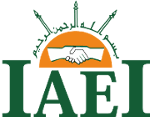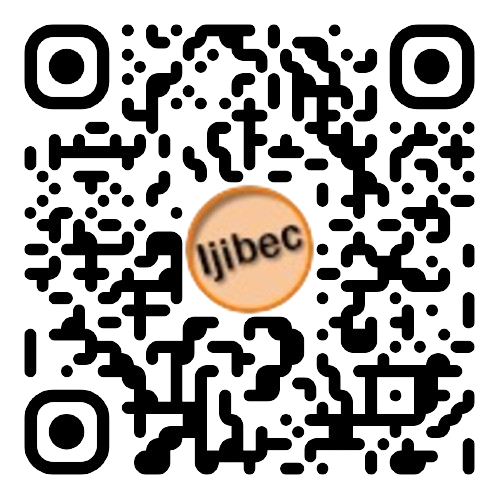Author Guidelines
The Manuscripts
- The manuscripts represent academic research in islamic economics discipline. It should contribute novelty or state-of-the-art for academic development or real world application or both. The sentences should be plain and straightforward to avoid ambiguities.
- When submitting the manuscript, the author should provide a letter states that the manuscripts have never been, or under consideration to be, published in other journal publications.
Structure of The Manuscripts
- Title. The title should be clear and informative, but does not exceed 10 words.
- Author's names and institutions. The author's names should be accompanied by the author's institutions and an email account, without any academic title. For a joint paper, one of the authors should be notified as the corresponding author.
- Abstract, keywords, and JEL classification numbers. The abstract should be less than 200 words. Please provide the abstract in both English and Indonesian versions. The key words should be of 3 to 5 words or phrases. Please provide at least one JEL (Journal of Economic Literature) classification number that suits your manuscript, which is available at http://www.aeaweb.org/jel/jel_class_system.php.
- Introduction. This section explains the background of the study, a review on the previous researches in the area, and aims of the manuscripts. It should be written without numbers and/or pointers.
- Methods. This section describes the tools of analysis along with the data and their sources.
- Results and Discussion. This section explains the results of the study.
- Conclusion. This section concludes and provides policy implications, if any, of the study. The conclusion(s) should be at the same order with ones discussed in the body of the manuscript.
- Acknowledgment. Acknowledgment, if any, should be written as the foot-note of the manuscript's title.
- References. This section lists only the papers, books, or other types of publications referred in the body of the manuscript.
Subjects and Authors Index
The authors should provide an index of subject, namely the specific terms in the manuscript. The authors should also provide the index of authors, namely the key authors of papers referred in the manuscript. Please write the family name followed by the given name.
Specific Writing Format
- Estimation result from a software package is not allowed to be directly presented in the paper. They should be presented in equations with the appropriate estimation results, or in a table summary.
- Any table should contain only heading and contents. Please provide only the top and bottom lines, along with the line(s) that separate the heading and the contents. Note(s) and source(s) should be included underneath the table if appropriate. Example:
General Writing Format
- The manuscript is prepared in a A4 paper, single-sided, and single line spacing format. A new paragraph should start 5 characters from the left margin, using 12-size, Calilbri font type.
- The manuscript is written in proper English, either British English.
- The manuscript should be between 12 to 15 pages long.
- The top and bottom margins are 1 inch.
- The title is written using capital letters only at first word or special name (example: location name), 14 font size, center position.
- Sub titles are written using capital letters only at first word or special name, 12 font size, started from the left margin.
- Sub of sub titles, if any, are written using capital letters only at first word or special name. They should be started from the left margin.
- Sub of sub of sub titles, if any, are written using capital letters only at the beginning of each word except for connecting words, all in italics. They should be started from the left margin.
- References should be those of the last ten years publication (>80%), except for key references (80%). Referring to any textbook should be minimized (<20%).
Citation
Citation in the text body should be written using the family name and years of publication. Example:
- Hill (2001) suggests that the objective of depreciation is ....
- Inflation targeting would be sufficient (see McCain, 1982).
- The definition of contagion is ... (Wagner, 1976; Rhonda 2009).
- The Authors are recommended to use Reference Management software
Tables and figures
Tables and figures should be presented as follows:
- The name of tables and figures should follow a numbering system (Arabic numbering system). The names of the tables and figures are on the top and bottom parts of the tables, respectively.
- The tables and figures should provide the source of information, if any, at the bottom part of both.
References
Manuscripts should include adequate reference citations to support the methodology and discussion of the research study. Manuscript is expected involve approximately 20-25 primary and update references to assert a high quality of the contribution to the knowledge development. Citations and references must strictly follow APA (American Psychological Association) style, and used Mendeley fot management reference. References should relate only to the content that is cited within the text of the manuscript. Consulting the APA style manual (http://www.apastyle.org/pubmanual.html) is highly recommended for compiling manuscript submissions.
References should appear as:
Book with one author:
Author, A. A. (2015). Title of work. Location/City, State: Publisher.
Book with two authors:
Author, A. A., & Author, B. B. (2015). Title of work. Location/City, State: Publisher.
Book with more than two authors:
Author, A. A., Author, B. B., & Author, C. C. (2015). Title of work. Location/City, State: Publisher.
Journal article:
Maysami, R. C., & Williams, J. J. (2006). Evidence on the relationship between Takaful insurance and fundamental perception of Islamic principles. Applied Financial Economics Letters, 2(4), 229-232.
Edited book:
Gregoriou, G. N. (Ed.). (2009). Emerging Markets: Performance, Analysis and Innovation. Florida, USA: CRC Press.
Chapter in an edited book:
Courant, P. N., Gramlich, E. M., & Rubinfeld, D. L. (1979). The stimulative effects of intergovernmental grants: or why money sticks where it hits. In P. Mieszkowski, & W. H. Oakland (Ed.), Fiscal Federalism and Grants-in-Aid (pp. 5-21). Washington, DC: The Urban Institute.
Web site:
Prasetyo, P. E., Sudarma, K., & Sulaha, A.S. (2014). Economic policy impact on competitiveness and efficiency of textile industry in central java. Economic Journal of Emerging Markets, 6 (2), 85-95. Retrieved August 23, 2016, from http://journal.IJIB-iain -pekalongan.ac.id/index.php/JEP/issue/view/417
Unpublished doctoral dissertation or master’s thesis: Mosquera, C. M. R. (2009). Essays on Economic Growth, Financial Integration and Exchange Rates. Unpublished doctoral dissertation, University of Pittsburgh, Pennsylvania.
Published proceedings:
Altinbas, H., & Biskin, O.T. (2015). Selecting macroeconomic influencers on stock markets by using feature selection algorithms. In E. Hromada (Ed.), IISES 3rd and 4th Economics and Finance Conference: Vol. 30. Procedia Economics and Finance (pp. 22-29). London: International Institute of Social and Economic Sciences.
A presented paper:
Lagos, Ricardo. (2009, October). Asset Prices, Liquidity, and Monetary Policy in an Exchange Economy. Paper presented at the Annual Economic Policy Conference of the FRB of St. Louis: "Debt, Financial Markets and Monetary Policy", Federal Reserve Bank of St. Louis, US.













